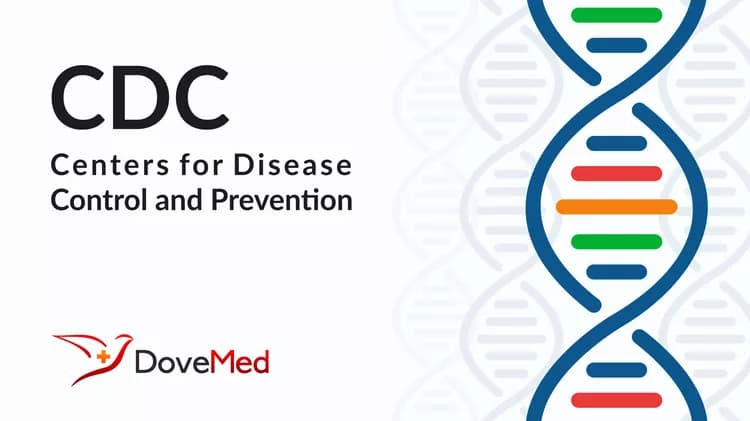
Targeting and Collaborations a Big Success; Priority Groups Received Majority of 2004-05 Influenza Vaccine Thanks to 17 Million Healthy Americans Stepping Aside
Targeting and Collaborations a Big Success;
Priority Groups Received Majority of 2004-05 Influenza Vaccine Thanks to 17 Million Healthy Americans Stepping Aside
The Centers for Disease Control and Prevention (CDC) announced today that during the 2004-05 flu season, the majority of the nation’s influenza vaccine went to the people at greatest risk for serious complications from flu, including 6 to 23 months old children, people 65 years of age and older, and people with chronic health conditions. Importantly, despite an unexpected and substantial vaccine shortfall, influenza vaccination coverage levels among adults in priority groups through January nearly reached levels similar to previous years, while coverage levels among adults not in priority groups were approximately half of historic levels.
“We know this was a challenging year for many patients and clinicians who patiently waited for influenza vaccine,” said Dr. Julie Gerberding, CDC director, “but overall our extensive efforts paid off. Thanks to outstanding cooperation between the manufacturers, federal, state and local health departments and round the clock engagement of the CDC teams, we had influenza coverage rates for priority groups similar to previous years, and we did with much less vaccine than last year.”
An estimated 40 million doses of the 61 million doses of influenza vaccine distributed this flu season went to persons in the priority groups. Most of these people were vaccinated in October and November 2004 with fewer being vaccinated in December and January 2005.
To monitor influenza vaccination coverage during the 2004-05 season, the CDC added questions to the Behavioral Risk Factor Surveillance System (BRFSS), an ongoing, state-based, telephone survey of the U.S. population. Among adults, influenza vaccination coverage through January of this 2004-05 season was highest among persons aged 65 years old and older (62.7%), followed by health-care workers with direct patient contact (35.7%), and people aged 18-64 years with high-risk conditions (25.5%). In comparison, a 2003 CDC survey found 65.6% of persons aged 65 years and older were vaccinated in 2003, along with 40.1% of health-care workers, and 34.2% of adults aged 18-64 years with high-risk conditions. (The final 2004 National Health Interview survey results are expected to be available in July 2005.)
The 2005 BRFSS survey also revealed a large decrease in the percentage of healthy persons aged 18-64 who received an influenza vaccination during the 2004-05 influenza season. According to the survey, when health care workers and contacts of children under 6 months of age are excluded, only 8.8 percent of healthy persons aged 18-64 reported receiving an influenza vaccination compared to an estimated 17.8 percent in 2003. The decrease in healthy persons receiving a flu shot represents about 17.5 million doses of vaccine made available this year for priority groups.
For children aged 6-23 months, coverage was estimated at 48.4 percent, and for children aged 2-17 years with high-risk conditions, coverage was estimated at 34.8 percent. This flu season was the first one when influenza vaccination was recommended for children aged 6 - 23 months. Influenza vaccination coverage among children aged 6 - 23 months and high-risk children 2- 17 years of age was substantially higher than among children not in priority groups, estimated at 12.3 percent. In contrast, during the 2002- 2003 influenza season, coverage among children aged 6 to 23 months was only 7.4 percent.
Planning for the 2005-06 influenza season has begun, and CDC has been meeting with influenza vaccine manufacturers including those who expressed an interest in seeking Food and Drug Administration (FDA) approval to distribute influenza vaccine in the United States. As of March 25, 2005, the supply of inactivated influenza vaccine projected for the 2005-06 season appears adequate to meet the historical demand (i.e. less than half of the approximate 95 million in priority groups) from persons in the priority groups established by ACIP during the 2004-05 season (about 40 million doses). If more vaccine becomes available, additional groups can also be targeted for vaccination.
“We hope we’ll have a better supply of influenza vaccine for the 2005-06 flu season,” said Dr. Gerberding. “But as we learned this year, our planning needs to take into account that the supply and demand for influenza vaccine can be as unpredictable as influenza. We’re developing plans for different situations, and working closely with the Department of Health and Human Services, National Institutes of Health, and FDA to try to get as many doses as possible for the next influenza season.”
Given the uncertainty about the number of doses of inactivated influenza vaccine that might be available for the 2005-06 season, CDC is encouraging the implementation of a two-tiered influenza vaccine ordering strategy by manufacturers, distributors and customers of inactivated vaccine. Under this approach, those who administer inactivated flu vaccine are being asked to prioritize their inactivated vaccine orders based on the following groups:
Persons 65 years of age and older.
Persons aged 2-64 years with underlying chronic medical conditions.
All women who will be pregnant during the influenza season.
All children aged 6-23 months.
Health-care workers involved in direct patient care.
Out-of-home caregivers and household contacts of children aged <6 months.
Residents of nursing homes and long-term care facilities.
Children aged 6 months-18 years on chronic aspirin therapy.
Whenever feasible, CDC also encourages a distribution strategy in which partial shipments are first shipped to all pre-booked customers, early in the vaccination season, followed by additional shipments later in the season. This strategy will enable all providers to administer vaccine initially to those persons at high risk, even when supplies are limited.
Related Articles
Test Your Knowledge
Asked by users
Related Centers
Related Specialties
Related Physicians
Related Procedures
Related Resources
Join DoveHubs
and connect with fellow professionals

0 Comments
Please log in to post a comment.